Psychocutaneous Disorders
Psychological problems are often manifest in the skin. In fact, it is estimated that between 20% and 30% of all skin disorders have some psychological component. Many patients who have psychocutaneous disorders-which are often direct evidence of or secondary to psychological abberations-drift from one physician to another, trying to find one savvy enough to cure their “skin condition.” Furthermore, although they have sought many medical opinions already, patients afflicted with psychocutaneous disorders almost always present as “an emergency.” While pharmacological intervention may benefit such patients, traditional mental health interventions are almost always required if the aberrant behavior is to cease.
Psychological problems are often manifest in the skin. In fact, it is estimated that between 20% and 30% of all skin disorders have some psychological component. Many patients who have psychocutaneous disorders-which are often direct evidence of or secondary to psychological abberations-drift from one physician to another, trying to find one savvy enough to cure their “skin condition.” Furthermore, although they have sought many medical opinions already, patients afflicted with psychocutaneous disorders almost always present as “an emergency.” While pharmacological intervention may benefit such patients, traditional mental health interventions are almost always required if the aberrant behavior is to cease.
Psychocutaneous disorders differ from psychophysiological cutaneous diseases, which are medical ailments (eg, psoriasis, dyshidrotic eczema of the hand, or severe acne vulgaris) that may be adversely affected by psychological factors such as stress. The latter are not usually considered true psychocutaneous disorders.
Factitial dermatitis
Patients with factitial dermatitis produce skin lesions through their own actions. Despite the self-induced nature of the lesions, patients typically deny steadfastly any role in their production. Nonetheless, they are quite aware of the nature of these lesions.
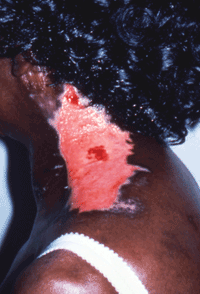
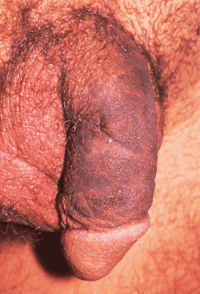

Physical examination reveals lesions on areas that the patient can easily reach-most often the face, forearms, hands, chest, and shoulders. These lesions often have bizarre shapes, irregular outlines, or geographic patterning. Some patients complain of accompanying pain. The lesions shown in Figures 1, 2, 3, and 4 were a result of factitial dermatitis.
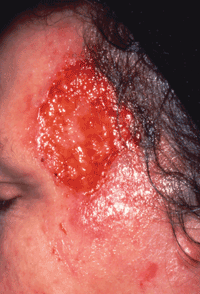
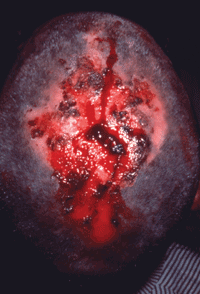

Neurotic excoriation
Patients who self-inflict neurotic excoriations are more likely to admit to manipulation of the skin than those with factitial dermatitis. Those with neurotic excoriations complain of an uncontrollable urge to scratch, rub, or pick at their skin-an urge to which they frequently succumb.
Physical examination reveals localized or generalized excoriation covered by a serosanguineous crust. Lesions can be seen in various stages of development and are located in regions that the patient can easily reach. Healed lesions may be evident as slightly atropic hypopigmented scarwith a faint rim of hyperpigmentation.
The lesions shown in Figures 5, 6, and 7 are neurotic excoriations.

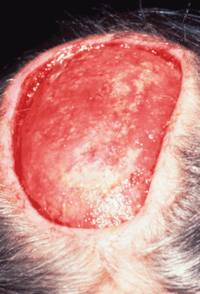
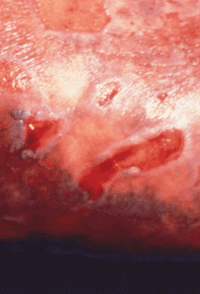
Delusions of parasitosis
Patients with delusions of parasitosis are convinced their skin is infested by parasites, regardless of any evidence to the contrary. The diagnosis is usually quite obvious. Keep in mind, however, that similar delusions can be induced by alcohol, cocaine and other abused substances, amphetamines, and atropine. Drug-related delusions of parasitosis are transitory, however.
The lesions shown in Figures 8 and 9 are the result of delusions of parasitosis.
